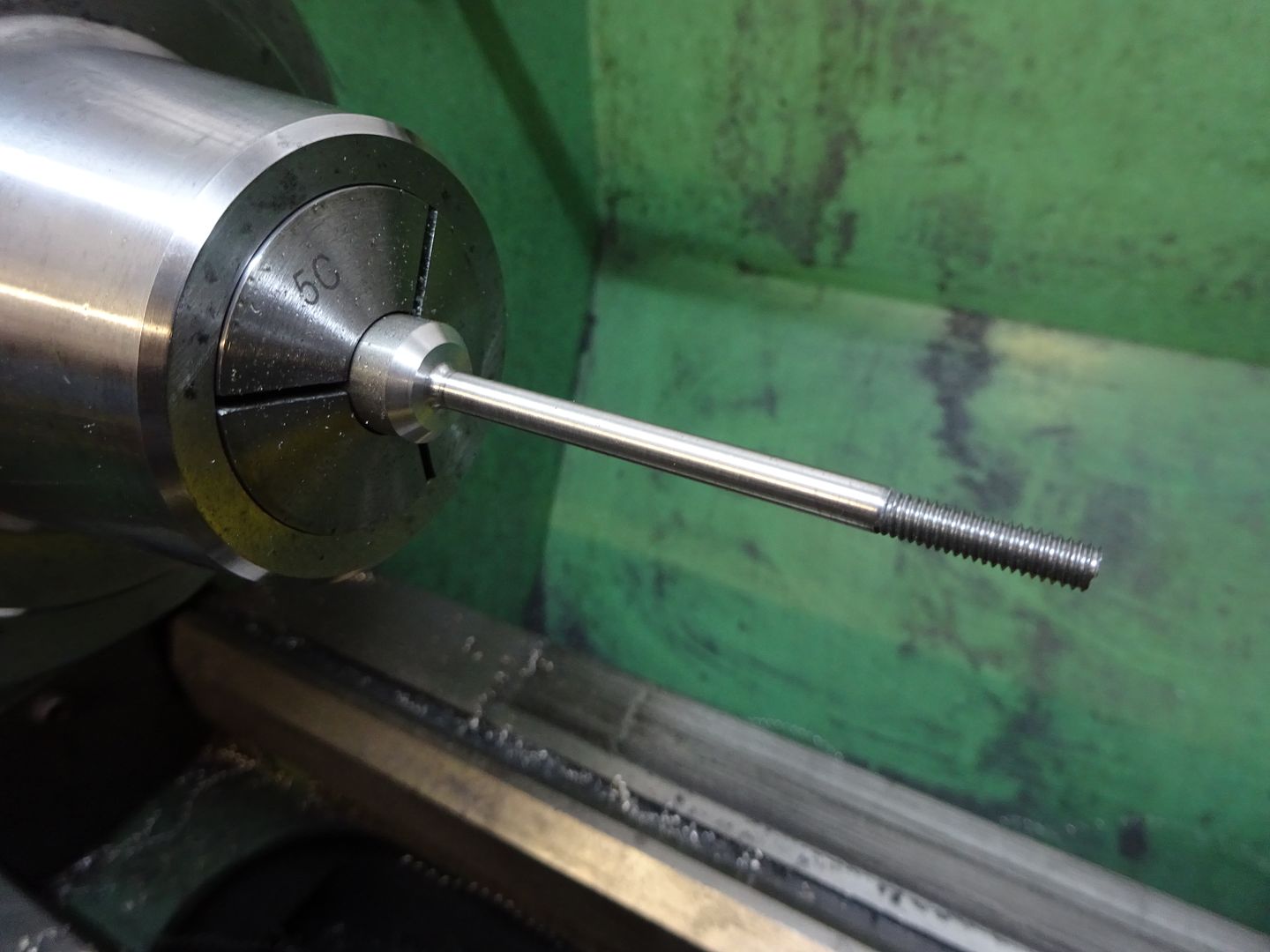Turning a 4mm diameter by 25mm long should not be that hard to do. It's not a particularly long, thin job. Can you post some pics of the set up and tooling you are trying to use? A very sharp HSS toolbit might be your best bet. Less cutting force than inserts.
Othewise, you might try a moving steady that clamps to the carriage and moves just ahead of the cutting tool. I;m sure there must be one available for your model lathe.
Alternatively you could drill a small centre hole in the end of the job and support it with a tailstock centre, probably the the "half centre" type that has been ground away to allow tool access to small diameters. You could then cut the end off and face it afterwards, holding the job in a small sleeve in the three jaw chuck (or collet).
If you want to pursue the single cut idea, you might start with smaller diameter stock to reduce the depth of cut needed. You need to do a few test runs to determine the depth of cut your lathe is comfortable with. Stop looking at Youtube and get out there and just play with your lathe to see what it can do. Try different tools, speeds, set ups etc. (Remember, small diameters like this need high rpms to achieve the required 100 ft/min surface speed. Slow rpm will encourage dig ins etc. For 12mm diameter steel, your rpm should be about 800rpm with HSS toolbit. Double that for carbide insert tooling. Once you get down to 4mm diameter, rpm should be double that again, or more. Again, play with it and see what works best on your machine.
Another way of turning long slender jobs (which this is not really one of) is to do it in stages. IE, stick the job just a little out of the chuck and with progressive cuts turn it to size for say 8mm length, then slide the stock out of the chuck another 8mm and turn down the next 8mm length to size and so on.
Edited By Hopper on 30/12/2018 01:11:25
Edited By Hopper on 30/12/2018 01:13:15
Chris Trice.


 I watched some videos on youtube, and the suggestion seems to be to start with a large piece of rigid stock, and then turn the part in "one shot" avoiding multiple passes to size. Now, this seems to be a solution that works well for the experienced lads on their nice expensive professional lathes, but will this work for a beginner on a Warco WM250V?
I watched some videos on youtube, and the suggestion seems to be to start with a large piece of rigid stock, and then turn the part in "one shot" avoiding multiple passes to size. Now, this seems to be a solution that works well for the experienced lads on their nice expensive professional lathes, but will this work for a beginner on a Warco WM250V?



